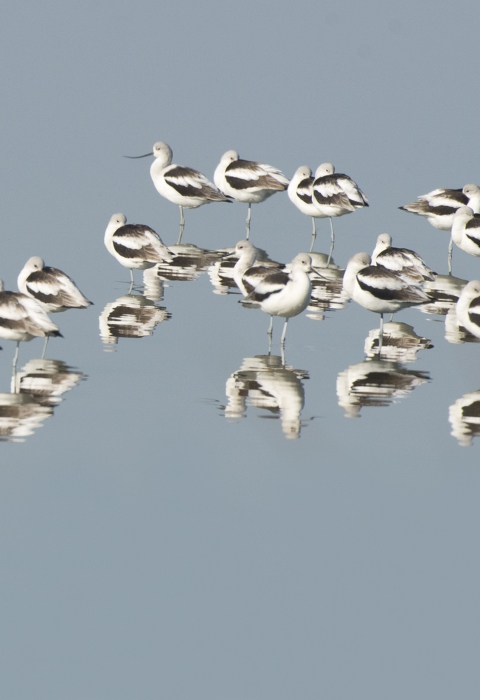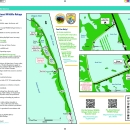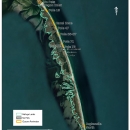Pea Island National Wildlife Refuge was established in 1938 to provide nesting, resting, and wintering habitat for migratory birds, including the greater snow geese and other migratory waterfowl, shorebirds, wading birds, raptors, and neotropical migrants; to provide habitat and protection for endangered and threatened species, such as loggerhead sea turtles; and to provide opportunities for public enjoyment of wildlife and wildlands resources. The refuge is located on the north end of Hatteras Island, a coastal barrier island and part of a chain of islands known as the Outer Banks, and includes beach, dunes, brackish ponds, and marshes. The bird list for Pea Island National Wildlife Refuge boasts over 370 species.
Visit Us
Pea Island National Wildlife Refuge is a tiny piece of barrier island on the Outer Banks of North Carolina... small in size, but huge in popularity among both wildlife and people! Pea Island offers visitors the opportunity to experience spectacular flocks of ducks, swans, and other waterfowl, and explore dynamic beaches and dunes. Visitors can stop by the Visitor Center, hike one of the refuge trails, dip a fishing line in the surf or the sound, or relax by the beach.
Things to Do
- Stop by the Visitor Center on Highway 12 to find out about recent sightings, learn about the refuge, and get an up-close view of wildlife through one of the telescopes.
- Hike along the North Pond Wildlife Trail (0.6mi one-way) to see waterbirds, turtles, and other wildlife.
- Dip your fishing line in the surf and see what you catch!
- Relax on the beach and reconnect with our natural surroundings.
- Join us for a guided interpretive program or tour. See what’s around on our weekly bird walks, or learn about sea turtles and other wildlife on the refuge!
- Launch your kayak or canoe at the New Inlet Boat Ramp and explore the marshy channels and islands on the sound side of the refuge.



